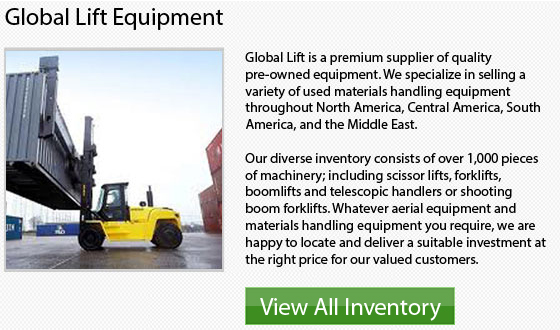
Change a Propane Tank
Propane powered forklifts are commonly used in warehouses. The forklift is designed with the propane tank mounted at the rear of the operator. The tanks, that look much like beer kegs, need to be replaced from time to time because they have a limited lifespan. Operators of forklifts should utilize caution when handling propane tanks. Compressed gases are dangerous, especially since the gas is flammable. Utilize care when replacing and removing propane tank to prevent being injured.
1 If there is a need to change the propane tank, the first step is to stop the forklift, then turn the tank valve off. The lift truck must be left on until the engine dies. This procedure burns off the gas in the transfer hose which connects the engine and the tank. Prior to taking the next steps, wear the proper safety equipment, like for instance insulated gloves made of either leather or neoprene. It is vital for you to protect your skin from touching the compressed gas, which is very cold.
2 The hose of the tank needs to be disconnected, followed by removing the tank from its holding straps. When putting in a new tank, reconnect the holding straps and reattach the hose at the valve of the tank by tightening the nut.
3 Leaks can be inspected just by applying soapy water to the valve and opening it slightly. If there is a leak, it will cause bubbles to froth from around the valve. If this occurs, inspect the connection hose at the nut and the valve area. The connecting nut should be re-tightened if you detect any leaks in the valve area, and afterward do the leak checking procedure all over again. Persistent leaks mean that the nut and connecting hose should be replaced. Nevertheless, if replacing the nut and hose still does not stop the leak, the tank should be replaced.
4 Open the valve all the way to allow the gas to fill the connecting hose. Then you could start the lift truck and continue working.